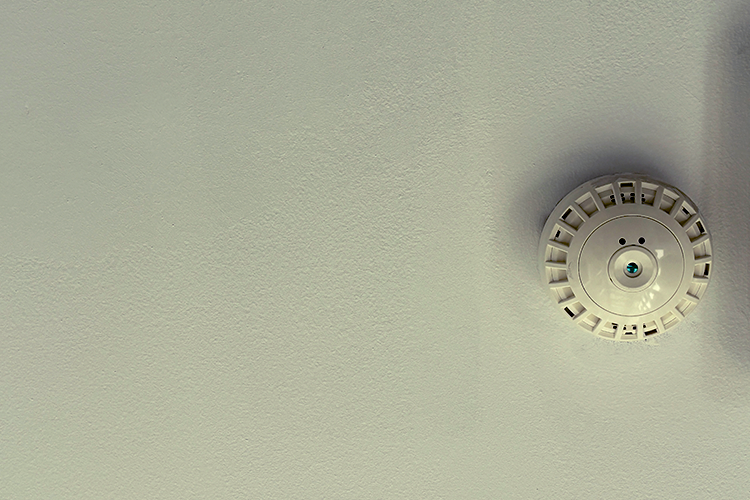Smoke alarms: make them work for you
The theme of this year’s Fire Prevention Week centres on smoke alarms, the unsung heroes of fire safety on campus, from residences and classrooms to libraries and labs.
One of the most essential fire safety tools is also one of the most inconspicuous. Properly used, smoke alarms save lives; here’s how you can make sure these small-but-mighty devices are working correctly—and working for you!

Installation
Smoke alarms should be installed on every level of the home, including the basement; they should be placed outside each sleeping area and inside each bedroom. “Complete coverage is essential,” says Denise Rose, manager, Fire Prevention Services. “For the best protection, smoke alarms should be interconnected so that when one sounds, they all do.” Rose goes on to explain that smoke alarms should be installed high on ceilings or walls to ensure they perform as intended.
When installing smoke alarms, make sure that they meet the needs of all occupants, including those with sensory or physical disabilities. All alarms should be listed by a qualified testing laboratory.
Testing
“In my experience, very few people test their smoke alarms as often as they should,” says Rose. “We recommend that all smoke alarms be tested at least once a month by pushing the test button.” If an alarm doesn’t pass the test—that is, if it fails to sound when manually activated, it should be immediately replaced. And if your alarm doesn’t have a testing button, it is out of date and should also be replaced.
Maintenance
U of T Fire Prevention Services recommends following the manufacturer’s instructions when cleaning and maintaining smoke alarms. Some units are equipped with non-replaceable long-life batteries; these generally last for about 10 years, at which point they are designed to be replaced. (If this type of alarm chirps, it’s time to replace the entire unit.) Other alarms feature replaceable batteries, which should be changed once a year—or as soon as the unit chirps.
On campus
U of T’s Fire Prevention Service regularly performs maintenance and testing to ensure that all fire detection and suppression equipment is in top working order. Don’t forget to subscribe to service alerts for your buildings to receive up-to-date information about scheduled testing and maintenance.
You can always reach out to your fire prevention officer with any questions about smoke alarms and fire safety on campus. Find your fire prevention officer here.
